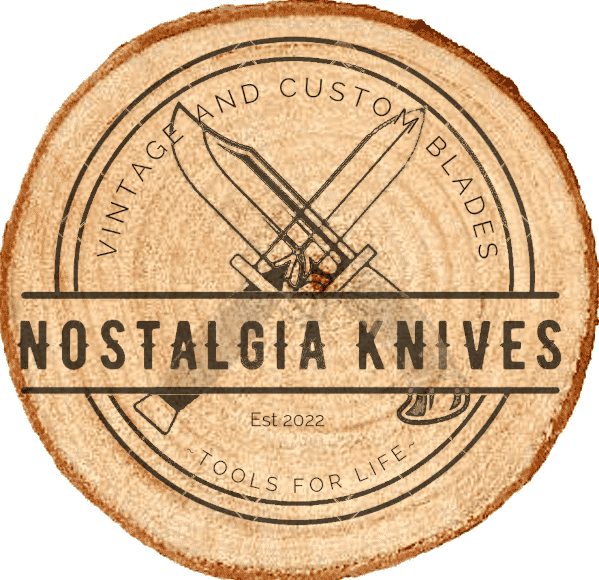A Nostalgic Journey: The History and Enduring Appeal of Boy Scout Knives.
A Nostalgic Journey: The History and Enduring Appeal of Boy Scout Knives.
Origins and Evolution:
The history of Boy Scout knives traces back to the early 20th century when the Boy Scouts of America recognized the need for a versatile and practical tool for its young members. The first official Boy Scout knife was introduced in the 1920s, featuring a simple design with a single blade, a can opener, and a screwdriver. These early knives were intended to instill a sense of responsibility and self-sufficiency in young scouts.
As the Boy Scouts organization evolved, so did the design of the scout knife. The iconic three-part design—main blade, can opener, and awl—became a hallmark of Boy Scout knives. Over the decades, variations emerged, incorporating additional tools like scissors, screwdrivers, and even magnifying glasses, turning the scout knife into a versatile outdoor companion.
Symbol of Preparedness:
Boy Scout knives quickly became more than mere tools; they became symbols of preparedness and the spirit of scouting. Scouts were taught to “Be Prepared,” and their trusty knives were essential for various outdoor activities, from whittling and camping to first aid and basic survival skills. The knife became a tangible representation of a scout’s commitment to self-reliance and readiness for any adventure.
Sentimental Value and Nostalgia:
For many individuals who were once Boy Scouts, the memories associated with their scout knife hold a special place in their hearts. Owning a Boy Scout knife becomes a nostalgic journey back to the days of scouting adventures, camaraderie around the campfire, and the thrill of earning merit badges. The sentimental value attached to these knives often transcends their practical utility, turning them into cherished mementos of youth and personal growth.
Passing Down the Tradition:
The love for Boy Scout knives often extends beyond individual experiences, creating a tradition of passing down these knives through generations. Parents who were once scouts take pride in gifting their children or grandchildren with a scout knife, sharing not only a practical tool but also a legacy of outdoor exploration and character development. This passing down of a scout knife symbolizes a connection between family members, bridging the generational gap through shared experiences and traditions.
Collector’s Items and Restorations:
The enduring appeal of Boy Scout knives has turned them into collector’s items. Enthusiasts seek out vintage scout knives, appreciating the craftsmanship and history behind each piece. Some individuals find joy in restoring old, worn-out scout knives to their former glory, preserving the legacy of these iconic tools. The process of restoration becomes a labor of love, breathing new life into knives that have weathered years of adventures.
Modern Adaptations:
While the nostalgia for classic Boy Scout knives remains strong, modern adaptations have also found their place. Contemporary scout knives may feature updated materials, improved locking mechanisms, and additional tools, catering to the needs of scouts in the 21st century. These modern versions maintain the spirit of the original scout knife while incorporating advancements in design and technology.
Conclusion:
The history of Boy Scout knives is intertwined with the growth and development of countless individuals who embarked on scouting adventures. The enduring love and nostalgia for these knives reflect the profound impact scouting has had on generations. Whether as cherished mementos of youthful adventures or as practical tools passed down through families, Boy Scout knives continue to be more than just blades—they are tangible symbols of character, preparedness, and the enduring spirit of scouting.
The Renaissance of Blades: Knives in Medieval History.
The Renaissance of Blades: Knives in Medieval History.
Introduction:
The medieval period stands as a tapestry of chivalry, warfare, and cultural transformation. Within this rich historical backdrop, knives played a pivotal role, evolving in both form and function. This article delves into the Renaissance of Blades during medieval times, exploring the diverse roles knives played in daily life, warfare, and the cultural fabric of this extraordinary era.
Medieval Craftsmanship:
The medieval period witnessed a revival of craftsmanship, and knives were no exception. Bladesmiths honed their skills, perfecting the art of forging and tempering metal. The design of medieval knives often reflected the intricate aesthetics of the time, with handles carved from bone or wood and blades adorned with engravings and inscriptions.
Everyday Life and Domestic Use:
In medieval households, knives were ubiquitous tools, serving a multitude of purposes. From the humble eating knife to more specialized implements like bread knives and utility knives, these everyday tools were essential for daily survival. Knives were used for food preparation, crafting, and a myriad of household tasks, making them indispensable in medieval domestic life.
The Seax: A Symbol of the Early Medieval Era:
One of the iconic knives of the early medieval period was the seax, a versatile single-edged blade with a distinct upward curve. Originating from Germanic tribes, the seax held cultural and symbolic significance. It served as a practical tool for everyday use, but its long, narrow blade also made it effective in combat. The seax became a symbol of status and identity, worn by warriors and common folk alike.
The Dagger: A Weapon of Choice:
As warfare became an integral part of medieval life, the dagger emerged as a crucial weapon. Knights and nobles carried ornate and finely crafted daggers as both a status symbol and a practical sidearm. The dagger’s double-edged blade and pointed tip made it effective for thrusting and close-quarters combat. Often adorned with intricate hilts and sheaths, these daggers were not only lethal weapons but also objects of artistic expression.
Culinary Culture and Rituals:
Medieval feasting was a grand affair, and knives played a central role in the culinary aspects of these celebrations. Feasting knives, distinguished by their size and ornate handles, were used for carving and serving at the banquet table. Some knives were even equipped with prongs, turning them into dual-purpose eating and serving utensils. The craftsmanship applied to these knives reflected the cultural importance placed on communal dining and the art of hospitality.
Symbolism and Ceremonial Knives:
Knives in medieval times were not merely utilitarian; they held symbolic and ceremonial significance. Ceremonial knives, often richly adorned with precious metals and gemstones, were used in rituals, ceremonies, and even religious observances. These ornate knives were symbols of authority, prestige, and cultural identity, reflecting the interconnectedness of material culture and belief systems.
Folding Knives and Innovation:
The late medieval period saw the emergence of folding knives. While not as common as fixed-blade counterparts, folding knives offered practicality and convenience. These knives featured a pivot mechanism that allowed the blade to fold into the handle, making them compact and easy to carry. Folding knives became popular among travelers, merchants, and those seeking a discreet everyday tool.
Conclusion:
The Renaissance of Blades during medieval times showcases the multifaceted role knives played in shaping the culture, lifestyle, and warfare of the era. From the utilitarian tools of daily life to the finely crafted daggers of nobility, knives were not only functional but also cultural artifacts. Their evolution mirrored the societal shifts of the medieval period, leaving an enduring legacy that continues to influence the design and significance of knives to this day.

